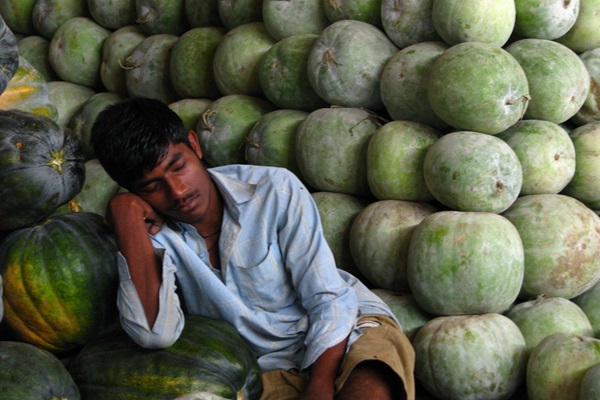.png)

Dhananjay Sinha, CEO and Co-Head of Institutional Equities at Systematix Group, has over 25 years of experience in macroeconomics, strategy, and equity research. A prolific writer, Dhananjay is known for his data-driven views on markets, sectors, and cycles.
April 28, 2025 at 7:20 AM IST
India’s reported 7.6% real consumption growth in 2024-25—and an even stronger 10% in the January-March quarter—stands in stark contrast to persistent signs of income fragility emerging from corporate results, bank lending trends, and consumer sentiment.
The evidence points to a middle of India’s consumption pyramid that remains hollowed out, raising critical questions about the sustainability of the headline growth narrative.
In a telling admission of structural slack, Maruti Suzuki India’s Chairman R.C. Bhargava remarked during the January-March earnings call that only the top 12% of Indian households, earning over ₹1.2 million annually, can realistically afford cars. The remaining 88%, with most households earning under ₹500,000 a year, are effectively priced out. Small car sales, traditionally the entry point for mass motorisation, fell by 9% in 2024-25. Bhargava dismissed the notion that rising SUV sales reflect a change in consumer tastes, attributing the shift instead to deep affordability constraints.
Maruti’s domestic passenger vehicle sales barely grew by 0.1% in 2024-25, even though its 1.1% growth in the January-March quarter bettered Hyundai’s -4.2% and Tata Motors’ -5.2%, both of which lean heavily toward premium segments. While Mahindra & Mahindra and Kia captured share through new launches, the sector’s 6-year CAGR of 4% remains well below the 8% seen a decade ago.
Bhargava’s concerns seem to echo across the wider consumer sector. Hindustan Unilever logged a modest 2.4% sales increase in the January-March quarter, with volume growth roughly matching topline gains. A marginal rural recovery was overshadowed by urban weakness and feeble pricing power. Nestlé India, which had flagged middle-class strain as early as October 2024, reported 4.1% sales growth and 2.5% volume growth, though profit slipped 5% as margins compressed. Both companies are now prioritising high-growth segments, even at the expense of short-term profitability.
Missing Middle
The thread running through these corporate commentaries is clear: mass-market demand remains anaemic. PLFS data, when cross-referenced with labour force participation rates, suggests that the average income for the bottom 90% of households barely crosses ₹200,000. The latest Economic Survey has openly acknowledged a real decline in household incomes over the past five years, while the Chief Economic Advisor has voiced concerns about stagnant wage growth.
Early earnings updates, combined with slowing personal credit expansion, reinforce the message. Banking sector data reveals a deceleration in unsecured lending, and equity market corrections have chipped away at household net worth, dampening the appetite for discretionary spending.
Despite policy tailwinds—including a better agricultural harvest, selective tax cuts, softer food inflation, and anticipated government salary hikes in 2026—a genuine demand revival remains out of reach. The post-pandemic K-shaped recovery, driven by premiumisation, is now giving way to margin pressures and more defensive business strategies.
Meanwhile, India's official consumption metrics evoke an unsettling parallel with the oddities once chronicled in Ripley’s Believe It or Not!, which gained fame ahead of the Great Depression by spotlighting bizarre realities. The current disconnect between macro data and ground-level evidence risks creating a similarly fragile illusion.
Policymakers and companies are now pinning hopes on easier retail lending norms and fresh liquidity infusions to plug the demand gap, betting that an uptick in leveraged consumption might salvage momentum. Yet with household income fragility persisting and deposit growth lagging, banks’ ability to sustain such lending-driven growth looks increasingly constrained—particularly against the backdrop of rising global protectionism.
The oddity is not merely anecdotal. It raises fundamental questions about the long-term viability of India’s consumption-driven growth model. Unless household incomes expand more broadly and meaningfully, the risk remains that the current boom narrative—like the artefacts of Ripley’s Odditorium—may eventually be remembered more for its curiosity value than for its substance.




